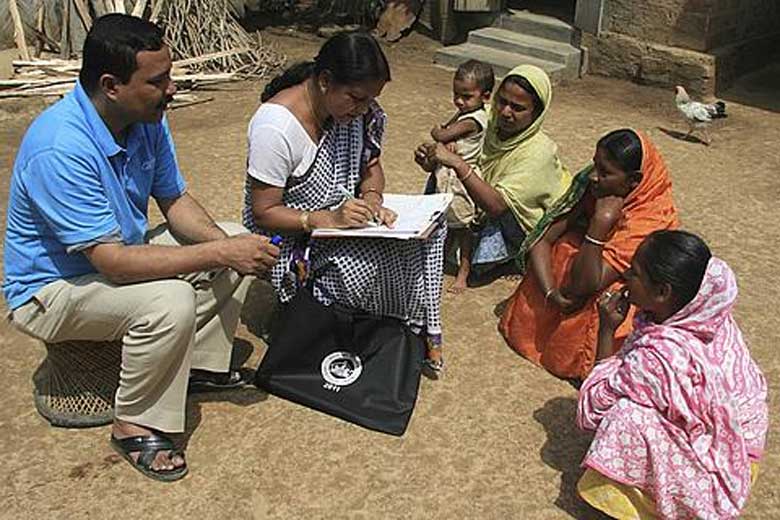A key hurdle in reducing the wasteful parts of welfare schemes and subsidies will be removed soon with the results of India’s first ever decentralised Socio-economic Caste Census (SECC) launched in 2011 set to be released soon.
Official sources told FE a Centre-state consensus on identifying the potential beneficiaries of various social sector schemes, including the ambitious food security programme, will finally be facilitated with the rural development ministry publishing the final SECC lists of all 640 districts of the country in a week or so.
These lists being the products of comprehensive door-to-door enumeration across the country are more reliable gauges of deprivation than the data furnished by the National Sample Survey Organisation or the National Accounts Statistics on which poverty estimates hitherto hinged on, experts feel.
Since the SECC lists have been compiled relatively recently, they also address the issues of data lag to a great extent (the latest NSSO survey-based poverty figures, for instance, pertained to 2011-12).
While the Narendra Modi government uses the direct benefit transfer scheme for reducing diversion of subsidised LPG meant for households to the commercial sector, little headway has been made in extending it to disburse the subsidies on food, fertiliser and kerosene.
This is primarily because the beneficiaries could not be identified by the Centre and states. In the case of the National Food Security Act (NFSA) roll-out, for instance, several deadlines for a pan-India execution have already been missed as many states are going slow on putting the beneficiary lists on line. At present only 12 states have rolled out food security scheme either fully or partially.
Sources said that in order to force states to be ready for the NFSA implementation, the Union food ministry might decide to supply foodgrains to states that are yet to be ready with beneficiary lists at above poverty line (APL) rates — rice at Rs 7.90 per kg and wheat at Rs 6.10 a kg — against food security entitlement of rice and wheat at Rs 3 and Rs 2 per kg, respectively.
The food ministry has already communicated to the states that additional grain allocation to them for distribution to both BPL and APL families would stopped unless the food security law is implemented. This followed a directive from the Prime Minister’s Office.
The expert group headed by C Rangarajan in July 2014 came out with an estimate that 30.9% of the rural population and 26.4% of the urban population were below the poverty line in 2011-12, with an all-India ratio of 29.5% . The Rangarajan formula, which differed from the Tendulkar methodology adopted by the former Planning Commission primarily in introducing relativity in estimation of deprivation, showed higher prevalence of poverty than the estimate based on the Tendulkar methodology, which put rural and urban poverty ratios in 2011-12 at 25.7% and 13.7%, respectively. The rates of poverty reduction seen by the two, however, haven’t differed much. The Rangarajan methodology was based on the principle that the poverty line should be “based on certain normative levels of adequate nourishment, clothing, house rent, conveyance and education and a behaviourally determined level of other non-food expenses”.
The SECC, analysts feel, would be a superior tool to identify the beneficiaries of the welfare schemes. So far, final SECC lists have been published of only 200 districts while another 424 have come out with the draft lists.
For Updates Check Economy News; follow us on Facebook and Twitter


